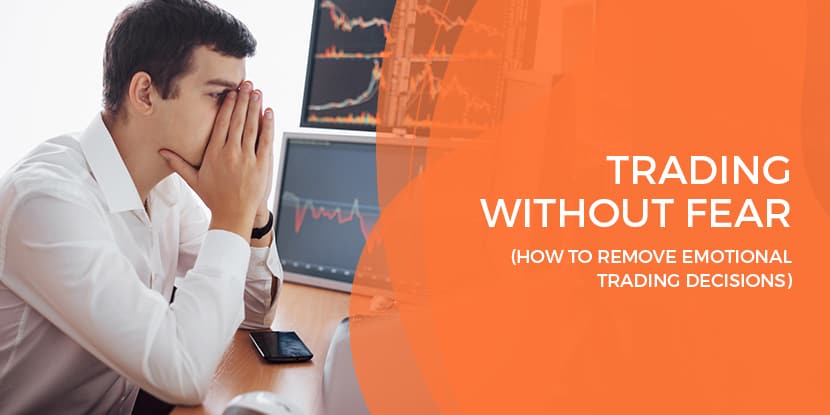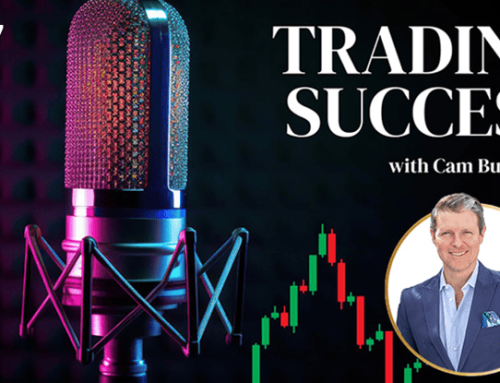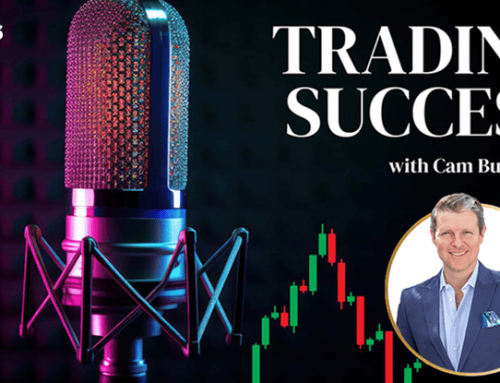Trading without fear means removing as much emotion from your trading as possible. Fear and greed are two of the biggest emotions that traders struggle with. Emotional trading can cause you to make mistakes and can lead to you losing money. In this article, we will discuss how to remove emotions from trading so that you can trade without fear.
How to Trade Without Fear:
Step 1: Control Fear
Step 2: Control Greed
Step 3: Overcome Fear of Loss in Trading
Emotional Trading Mistakes
1. Trading Our Of Fear
When you trade out of fear, you’re letting your emotions dictate your trading decisions. This can lead to you making bad trades and losing money. As a trader you want your decisions to be made based on logic.
For example: You may have a trade that starts out losing, but then reverses. Fear may make you exit the trade as soon as it becomes neutral, or profitable. Next thing you know, the trade keeps running and you miss out on all those profits.
2. Trading Our Of Greed
When you trade out of greed, you are focused on making money rather than on making good trades. This can lead to you making bad trades and losing money.
For example: The classic scenario is FOMO. What is FOMO in trading? It’s when you see price moving quickly and you want to be one of the crowd making all the money. The problem is, you have likely already missed the entry and the trade may not even be in your plan.
3. Being Afraid to Lose Money in Trading
When you are afraid to lose money in trading, it can cause you mis-manage trades and lose money.
For example: It’s common for new traders to exit a trade as soon as it spends some time at a loss. You need to hold that position until it reaches your stop loss, let it play out. It would be frustrating, should the trade become profitable, to exit early.
How To Control Fear And Greed in Trading
When it comes to trading, it’s important to have control over your fear and greed. This does not mean we don’t have the emotion, try to block it or not feel the emotion rising, however we consciously choose to not react to the feeling. By doing this, you will be able to make good decisions based on your trading plan.
There are three main steps that you need to take in order to control your fear and greed in trading. The first step is to control your fear. When you are afraid, it can cause you to make poor decisions in trading. By controlling your fear, you will be able to make better decisions based on your trading plan.
How To Overcome Fear of Loss in Trading
Fear of loss is a common emotion that can keep traders from making successful trades. However, with the right techniques, traders can overcome their fear and make profitable trades.
One of the most important steps in overcoming fear of loss is to develop a positive trading mindset. This means accepting that losses may occur and focusing on the opportunities that exist in each trade.
Another important step is to develop a trading plan. This will help traders stay disciplined and avoid over-trading.
Finally, it is important to remain calm during trading sessions. This will help reduce the impact of fear on your decision-making.
There are 3 main tools that will help you remove the negative effects that emotions could have on your trading performance:
How To Remove Emotions From Trading
Fear of loss is a common emotion that can keep traders from making successful trades. However, with the right techniques, traders can overcome their fear and make profitable trades.
One of the most important steps in overcoming fear of loss is to develop a positive trading mindset. This means accepting that losses may occur and focusing on the opportunities that exist in each trade.
Another important step is to develop a trading plan. This will help traders stay disciplined and avoid over-trading.
Finally, it is important to remain calm during trading sessions. This will help reduce the impact of fear on your decision-making.
1. Trading Strategy
Trading strategies are a set of rules that describe what makes a good trade, and how to manage that trade. The strategy is made up of rules using technical analysis applied to trading charts. Having a trading strategy for identifying and managing trades provides a reference point for a good trade.
If you see a trade that you think might be profitable, but it doesn’t match your strategy, don’t trade it. Placing that trade despite it not fitting within your strategy would be an emotional decision. Base your decisions on logic not feelings of regret, fear, hope, and greed.
2. Trading Plan
A trading plan will contain your strategy along with rules for applying your strategy to your trading. Your trading plan will include rules about how much you’re allowed to trade, what markets you’re allowed to trade etc. Your plan will also include short and ling-term goals for your trading.
Having these things laid out in a plan helps a trader stick to their path. The more structure you provide yourself, the less room you have for emotion to control decisions.
A very good trader once told me, “Your trading plan is your boss.”
3. Trading Journal
A trading journal is a document that a trader uses to log their trading results along with their emotions throughout the session.
A trading journal will help a trader remove emotions from trading by providing a way reflect on performance and emotion.
Removing emotions from trading is hard, if you’re not identifying those emotions, it’s near impossible. You should use a trading journal to not only track how well you’re trading but also to think about why you might be making mistakes. Reflecting on your trading is one of the best ways to improve as a trader.
For an example of a trading journal, download our free day trading journal

Trading Without Fear Bottom Line
Trading without fear is impossible, however not letting the fear impact on your decision making and behaviours can lead to consistent trading.
By controlling your emotions, you can overcome fear and greed and make sound trading decisions. You will need to be able to identify your emotions, and recognise when they affect your trading.
Stay disciplined in following your trading plan despite emotional distractions. Use a trading journal to reflect on performance and emotion.
If you can achieve these things, you might not start trading without fear, but you can limit the feeling of fear and the negative effects when trading.





